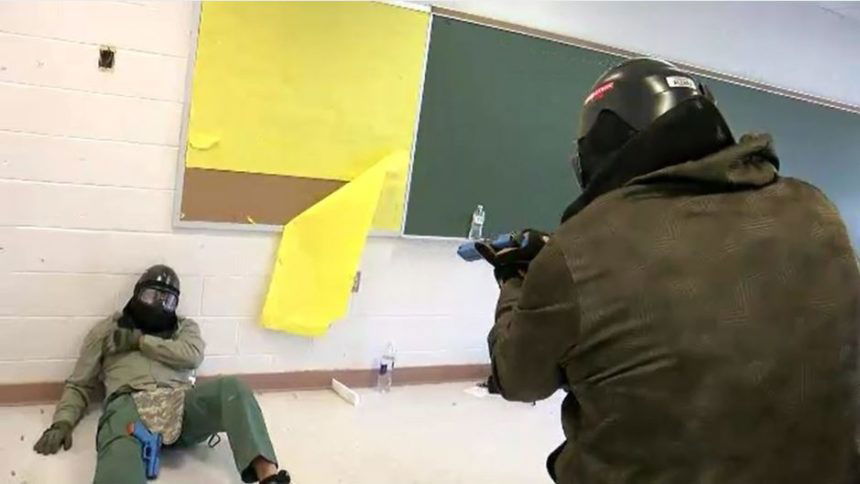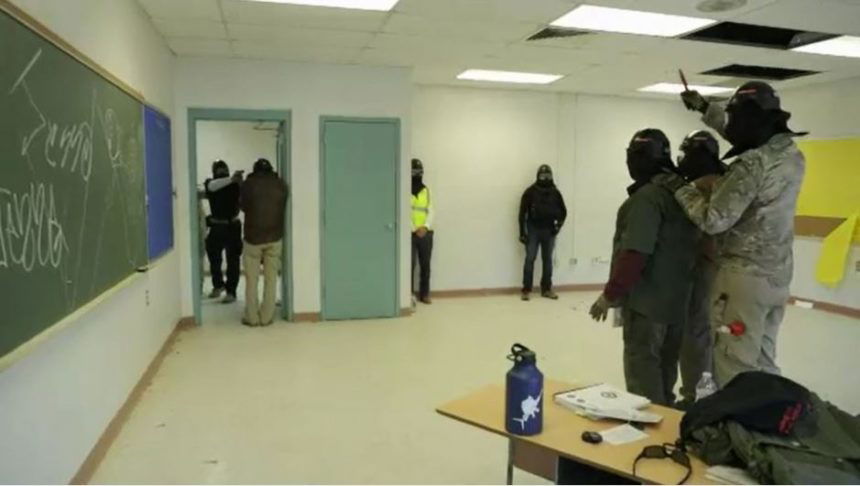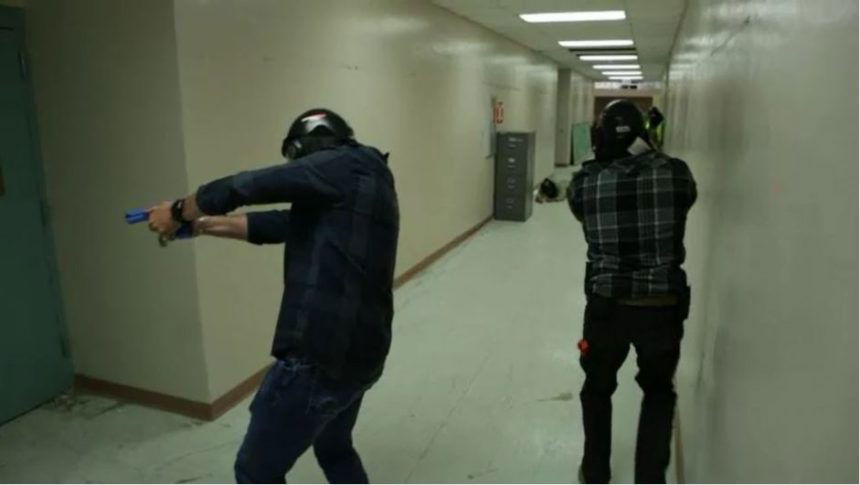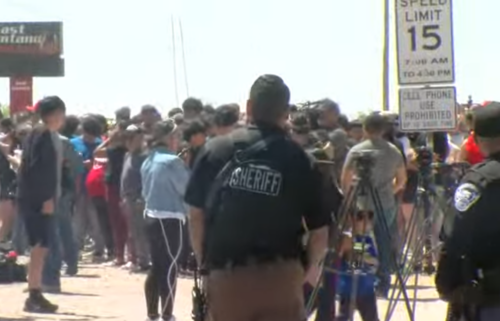‘You’re walking into the unknown’: Active Shooter Response



CANUTILLO, Texas (KVIA) -- The sound of gunshots filled the hallways and classrooms in the old Canutillo Elementary school building.
More than two dozen law enforcement officers representing 11 agencies recently tackled the Advanced Law Enforcement Rapid Response Training (ALERRT) in the now unused building.
"In these surroundings, being in an elementary school, helps us drive it home more," Danny Perez, an ALERRT instructor, said. "This is why we're doing this. Not just for us but the kids in our community."
Agencies represented in this training came together from Odessa to Doña Ana County.
"We tell them it's going to be very chaotic," Perez said. "But just realize that all that chaos can be controlled if you control yourself a little better."
ALERRT, based out of Texas State University in San Marcos, was created in 2002 and is the national standard for active shooter training.
The training spans a week and puts the students through a wide array of simulations which include building approach, building breach, hostage situations, IEDs, etc.
"Your heart rate is up," Texas State Trooper Blanca Votta said. "You're nervous. You're walking into the unknown. You're hearing gunshots."
Some scenarios are run through with the officers using marking cartridges, which fire rounds powerful enough to leave a large welt. These scenarios require the students to wear masks and headgear for protection.
"That provides auditory exclusion," Votta said. "All of that is making you want to get into a tunnel-vision type of state."
3 course objectives
The ALERRT course teaches three key objectives regardless of the scenario:
- Stop the killing -- stop/isolate the threat
- Stop the dying -- immediate medical care (i.e. stop the bleed)
- Rapid evacuation -- get victim(s) to a trauma center
Over the course of the training, law enforcement officers learn best practices to achieve each objective including tourniquet application and evacuating the wounded while still providing each other protection from a possible existing threat.
Aug. 3 mass shooting impact
The ALERRT course has evolved considerably since its inception in 2002 and every mass shooting event provides new lessons.
"Most of the first responders that were [at the Santa Fe High School shooting] gave us a lot of insight as to what they saw," Perez said.
In fact, Perez said some of the first responders who went to that scene are ALERRT instructors. While it's still too early to asses what can be taken from the Aug. 3 shooting, it's clear communication is key especially in a region with so many agencies.
"This has increased my awareness that all agencies need to come together to train together because we do have to respond together," Votta said.
Hudspeth County Sheriff's Deputy Carlos Chaparro, who responded to the Cielo Vista Mall on Aug. 3, agrees.
"The methodology everyone has is a little bit different."
The ALERRT course provides an opportunity for agencies to come together in one location and learn the same principles and concepts.
"It's not going to be necessarily the guy that you work with every day," Perez said. "It may be a guy you have never seen before from across town from another agency, from a federal agency, that shows up."
And, ultimately, the officers who went through this course hope it sends the public a strong message.
"El Paso is safe and we need to continue to feel safe," Votta said.
'Active Shooter Response' series

